Navigating the UK’s welfare system can be complex especially when it comes to understanding who qualifies for specific benefits like Disability Living Allowance (DLA). Designed to support individuals with long-term physical or mental health conditions, DLA plays a vital role in helping those who require additional care or mobility assistance.
While the benefit is no longer available for new adult applicants and has largely been replaced by Personal Independence Payment (PIP), DLA continues to serve children under 16 and certain adults with existing claims.
This article explores what illnesses typically qualify for DLA in the UK, focusing on eligibility criteria, assessment methods, and examples of common conditions. Whether you’re a parent, carer, or individual seeking guidance, understanding the framework behind DLA can be the first step in securing essential support.
What Is Disability Living Allowance (DLA) in the UK?
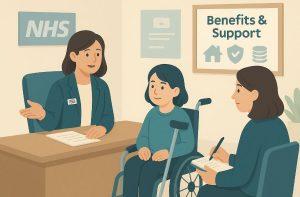
Disability Living Allowance (DLA) is a benefit provided by the UK government to support individuals who live with a disability or long-term health condition that affects their daily lives. Originally introduced in 1992, DLA was designed to help cover the extra costs associated with personal care and mobility difficulties.
Although DLA has been replaced by Personal Independence Payment (PIP) for adults aged 16 to 64, it remains available for children under 16 and some adults who were already claiming it before the transition. The benefit is not means-tested and does not depend on income or employment status, making it accessible to a broad range of individuals who meet the criteria.
DLA is divided into two components:
- Care Component: for individuals needing help with personal care.
- Mobility Component: for those who have difficulties getting around.
Understanding how illnesses and disabilities fit into this structure is key to determining eligibility.
Who Is Eligible to Receive DLA Benefits?
Eligibility for DLA hinges on a combination of factors including age, residency, and the nature of the illness or disability. Applicants must usually be:
- Under the age of 16 (for new claims).
- Living in England, Wales, or Scotland.
- Experiencing a disability that affects their ability to carry out everyday activities or move around.
- Expected to have the condition for at least 3 months and foresee it continuing for a minimum of 6 months.
For adults, only those who were already receiving DLA before PIP replaced it may still be eligible, provided their condition remains unchanged.
What Are the Main Categories of Illnesses That Qualify for DLA?
DLA eligibility isn’t strictly tied to specific diagnoses but rather how the condition impacts daily life. However, certain types of illnesses are frequently associated with DLA claims:
Physical Disabilities
Physical impairments, such as those affecting movement, strength, or coordination, often qualify for DLA. These conditions usually impair the person’s ability to dress, bathe, use the toilet, or move independently.
Mental Health Conditions
Conditions such as depression, anxiety, schizophrenia, and bipolar disorder can qualify for DLA if they substantially impact day-to-day care or mobility. For example, someone with severe anxiety may need help when going out or performing routine tasks.
Developmental and Learning Disorders
Autism spectrum disorders, ADHD, and learning difficulties like dyslexia or dyspraxia may be covered under DLA if they cause significant impairment. The impact on cognitive abilities and behaviour is more important than the diagnosis itself.
Which Physical Disabilities Are Commonly Accepted for DLA?
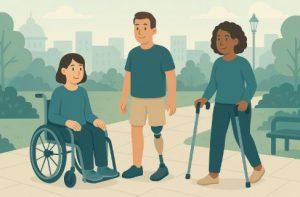
Mobility Limitations
Mobility challenges caused by conditions such as cerebral palsy, muscular dystrophy, or amputation are strong qualifiers. These impairments often necessitate the use of mobility aids, which is considered during DLA assessment.
Chronic Pain and Musculoskeletal Disorders
Illnesses like arthritis, fibromyalgia, and chronic fatigue syndrome (ME/CFS) may qualify if they cause persistent pain and reduce independence.
Sensory Impairments
Blindness or severe visual impairment usually qualifies automatically for certain levels of DLA. Similarly, significant hearing loss can be a basis for eligibility, especially if it affects communication or safety.
What Mental Health Conditions Can Qualify for Disability Living Allowance?
Mental health conditions must severely affect a person’s ability to function independently or safely. Examples include:
Anxiety and Depression
Severe or long-term depression and anxiety disorders can justify a DLA claim, especially when they affect basic daily routines like eating, sleeping, or personal hygiene.
Autism Spectrum Disorders
Many children and adults on the autism spectrum require constant supervision or assistance, especially in unfamiliar environments or when transitioning between tasks.
Post-Traumatic Stress Disorder (PTSD)
PTSD can be extremely debilitating, leading to panic attacks, hypervigilance, and inability to function in public spaces without support.
Schizophrenia and Bipolar Disorder
These conditions may lead to unpredictable behaviour or significant care needs, which often warrant a DLA application.
Can Children With Disabilities Qualify for DLA in the UK?
Yes, DLA is primarily available for children under 16 with physical or mental disabilities. For children to qualify, they must require significantly more care or supervision than other children of the same age without a disability.
Conditions Common in Child DLA Claims
- Autism and ADHD
- Cerebral palsy
- Epilepsy
- Developmental delays
- Genetic disorders like Down syndrome
DWP may require evidence from schools, medical professionals, or therapists to support claims on behalf of children.
How Is the Care and Mobility Component Assessed?
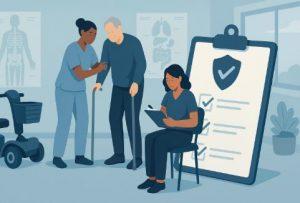
DLA is split into two parts, and a person may qualify for one or both.
Care Component
This considers how much help the person needs with daily activities such as dressing, washing, eating, and taking medication. It has three rates: lowest, middle, and highest, depending on the level of care required.
Mobility Component
This measures the person’s ability to walk or move around. It has two rates:
- Lower rate: for people who need supervision outdoors
- Higher rate: for those who are unable to walk or have severe difficulty walking
Each component is assessed based on frequency, duration, and nature of assistance required.
How Does the DWP Assess Illnesses for DLA Qualification?
Use of Medical Evidence
Doctors’ letters, hospital discharge notes, specialist reports, and prescription histories are all considered during the review process.
Application Form (DLA1A)
This detailed form includes sections for describing the claimant’s difficulties and how the condition affects daily life. The more detailed and consistent the responses, the stronger the application.
Medical Assessments and Reviews
In some cases, DWP may arrange a face-to-face or telephone assessment to evaluate the individual’s needs. They may also contact the claimant’s GP or specialist directly.
What Are Some Examples of Qualifying Conditions for DLA?
Below is a detailed table showing common illnesses and whether they typically qualify for DLA, along with additional notes.
Illnesses That Commonly Qualify for DLA
| Condition | Type | Qualifies for Care Component | Qualifies for Mobility Component | Notes |
| Autism | Developmental | Yes | Yes | Depends on supervision needs |
| ADHD | Neurological | Yes (case-dependent) | Rarely | Behavioural impact matters |
| Cerebral Palsy | Physical | Yes | Yes | Usually qualifies at high rates |
| Arthritis (Rheumatoid/Osteo) | Musculoskeletal | Yes (based on severity) | Yes | Chronic pain is a key factor |
| Epilepsy | Neurological | Yes | Sometimes | Seizure frequency affects outcome |
| Blindness | Sensory | Yes | Yes | Often automatic qualification |
| Learning Difficulties | Cognitive/Developmental | Yes | Sometimes | Based on daily support needed |
| Down Syndrome | Genetic | Yes | Yes | Full care and mobility support often needed |
| Severe Anxiety | Mental Health | Yes | Sometimes | Emotional regulation affects eligibility |
How Can You Apply for DLA in the UK?

Applying for DLA involves submitting a claim form, supported by relevant evidence.
Step-by-Step Application Process
- Request a claim pack (DLA1A Child) by calling the DWP helpline or downloading it from GOV.UK.
- Fill out the form with detailed descriptions of care and mobility needs.
- Collect medical evidence such as GP letters or specialist reports.
- Submit the form by post to the address specified on the pack.
The DWP may take several weeks to review and process the application.
What Should You Do if Your DLA Claim Is Rejected?
Understand the Reason
The decision letter will explain why the claim was unsuccessful. This will help in preparing a strong reconsideration request.
Request a Mandatory Reconsideration
You must ask for a reconsideration before making an appeal. Include any new or updated medical evidence.
Appeal the Decision
If still unsuccessful, you can appeal to a tribunal. Legal aid services or disability advocacy groups can offer support during this process.
How Is DLA Different From PIP and Other UK Disability Benefits?
While DLA and PIP serve similar purposes, there are notable differences:
DLA vs. PIP
- DLA: For children under 16 or existing adult claimants
- PIP: For adults 16 to State Pension age
- PIP involves a points-based assessment and face-to-face evaluations, while DLA relies more on written evidence.
Other Benefits
In addition to DLA, individuals may be eligible for:
- Carer’s Allowance
- Universal Credit with disability elements
- Attendance Allowance (for pensioners)
Why Is It Important to Understand DLA Eligibility Criteria?
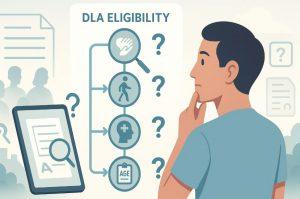
Knowing what qualifies for DLA empowers individuals and families to access crucial support. This financial assistance can improve quality of life, access to care, and mobility.
Understanding the eligibility criteria also helps reduce frustration, speeds up the application process, and ensures that those who are truly in need receive timely support.
Conclusion
Understanding what illnesses qualify for Disability Living Allowance in the UK is essential for ensuring that individuals with long-term physical, mental, or developmental conditions receive the support they need.
While there’s no definitive list of qualifying conditions, the key lies in how the illness affects daily life and mobility. Whether applying for a child or continuing an existing adult claim, providing detailed, accurate evidence can significantly improve the chances of a successful application.
FAQs
What age groups are eligible for new DLA claims?
Only children under 16 can make new DLA claims. Adults must apply for PIP.
Can a temporary illness qualify for DLA?
No. The condition must have lasted at least 3 months and be expected to continue for at least 6 more.
Do you need a medical diagnosis to apply for DLA?
While a diagnosis helps, eligibility is based on how the condition affects daily life.
How long does it take to process a DLA application?
It typically takes 8 to 12 weeks, depending on the complexity of the claim.
Can DLA be awarded indefinitely?
Yes, some awards are indefinite, but most are for fixed terms and subject to review.
Is DLA means-tested?
No, DLA is not affected by income or savings.
Can someone help with filling out the DLA form?
Yes, disability advocacy groups and Citizens Advice can provide assistance.








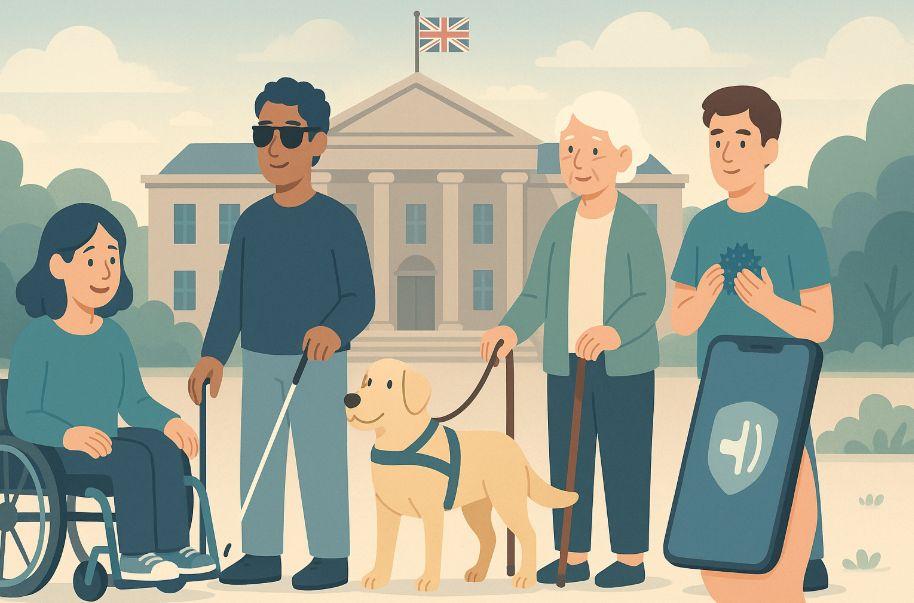
Leave feedback about this